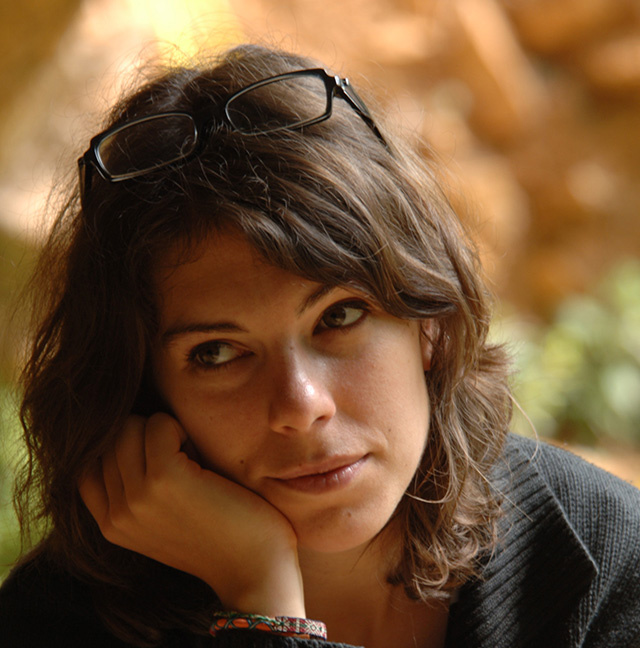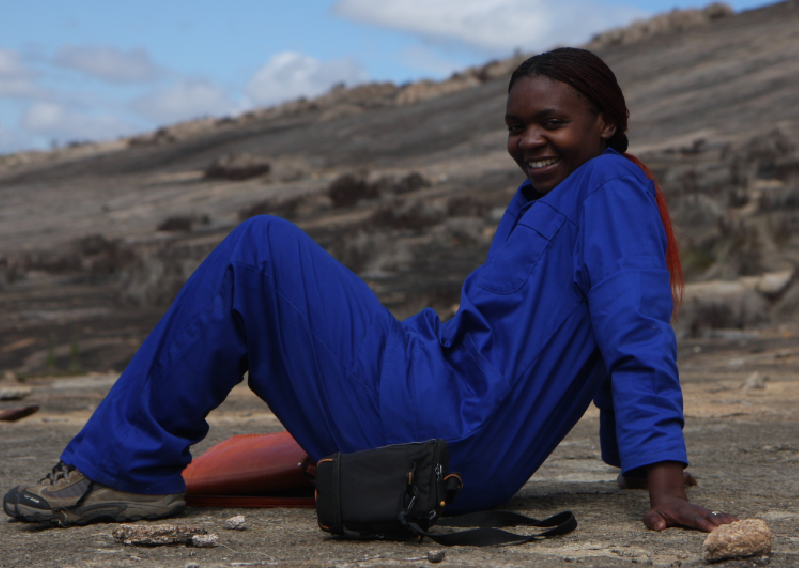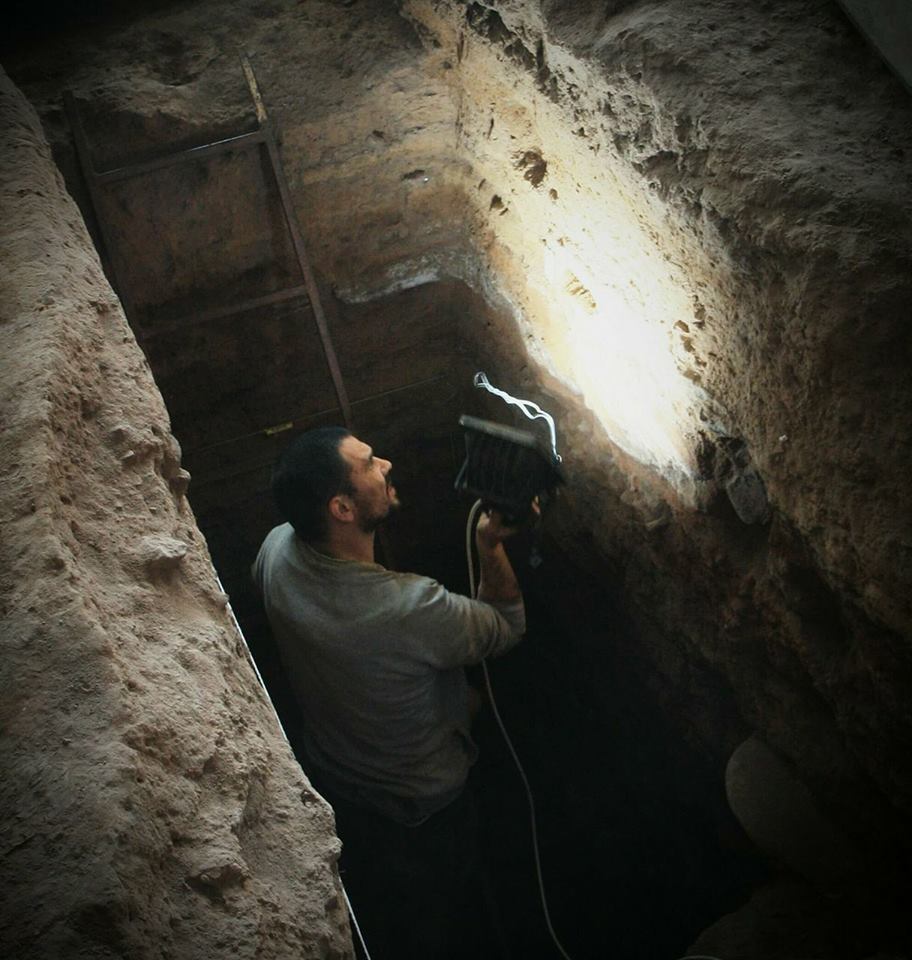Past Projects
- The Matobart Rock Art & Stone Age Project (2017-2020)
Rock Art of hunter-gatherers in the Southern African Later Stone Age: apparition, filiations and ruptures in the Matobo (Zimbabwe)

Fragment from the painted wall from Nswatugi shelter in Matobo (c) Camille Bourdier
In short
For the very first time, a French-Zimbabwean mission conducts prehistoric explorations in Zimbabwe. The idea of conducting further research in the Matobo hills originated during an April-May 2016 mission in Zimbabwe, initiated and predominantly financed by IFAS-Recherche.
This four-year project began in 2017 with the support of the Commission on Archaeological Excavations of the French Ministry of Europe and Foreign Affairs (Commission des fouilles), the Institut universitaire de France (IUF), and IFAS-Recherche.
Who?
The Matobart Project is led by Camille Bourdier (Université Toulouse-Jean Jaurès) and co-coordinated by Ancila Nahmo (University of Zimbabwe) and Guillaume Porraz (Université Paris Nanterre, former CNRS researcher affiliated to IFAS-Research).
This project emerged from a collaboration between the University of Toulouse Jean Jaurès (UMR 5608 Traces), UMR 7041 ArScAn, the University of Zimbabwe and the National Monuments and Museums of Zimbabwe.
Where?
Located in Southwestern Zimbabwe, the Matobo Hills are extremely rich in rock paintings: over 3.000 sites are known to this day, which earned the region a place on the UNESCO World Heritage List in 2003.

What?
The Matobart Project aims to study the wide diversity of rock art among the 3.000 sites of the Matobo Hills. The programme combines field missions (recordings/inventory and systematic survey of engraved surfaces, characterization of paint pots, cartography of local colouring materials) and archaeological collections recovery (characterization of painted scales and stratigraphy colouring materials, typo-technological reassessment of lithic industries, datations).
Its main focus is to answer two interrogations:
- When did rock art emerge in the Matobos, and in what conditions?
As a first step of the mission, the team aims to list all the relevant sites to create a reference stylistic sequence for the Matobos, through a multi-criteria analysis and a technological analysis of the paintings. This analysis should provide more information in order to understand the timeline and conditions of appearance of the hunter-gatherer societies.
- How did the Matobo rock art evolve over time, and what does it say of the long-term socio-cultural dynamics of Later Stone Age populations of Zimbabwe-Limpopo?
When did the local rock art shift from simple geometric drawings to complex figurative paintings? What can we infer from these evolutions? In order to gain a more comprehensive knowledge of these evolutions, the team will especially focus on the diversity of rock art in the Matobo area. Such diversity unmistakably speaks of the socio-cultural differences among the populations who produced them.
By integrating this stylistic sequence into the Zimbabwe-Limpopo chrono-cultural sequence, the team aims to single out elements of filiation and rupture in the production of rock art.
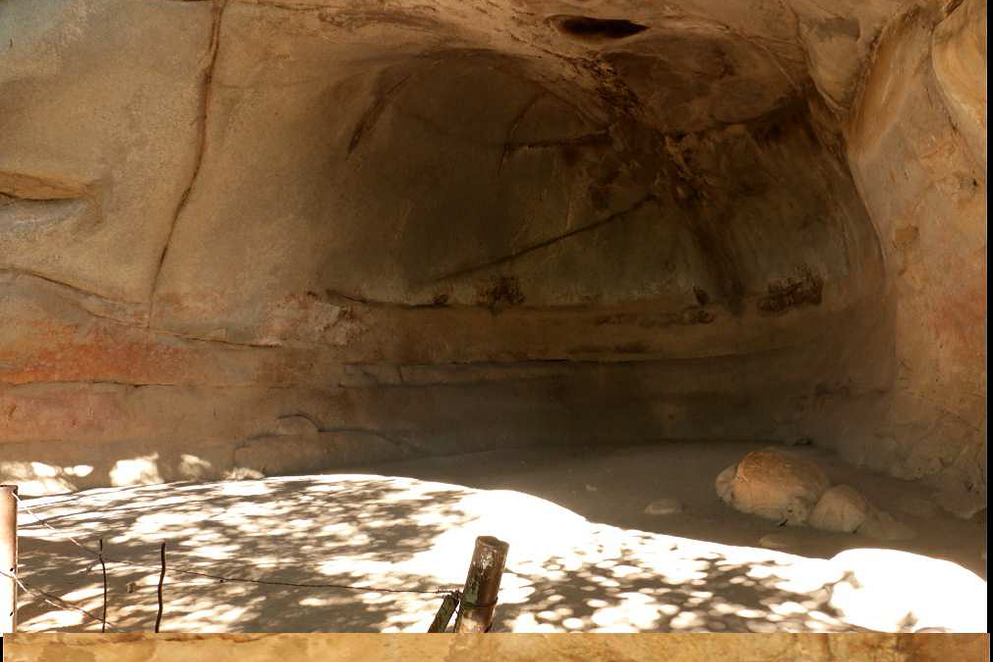
Pomongwe cave view from the shelter (c) Camille Bourdier
A significant body of evidence points to the existence of rock art from the Pleistocene era, the Later Stone Age, if not even the Late Middle Stone Age — a phenomenon which remains unprecedented in Southern Africa. Proposing a chrono-stylistic reference framework for the region is therefore a major stake in order to characterize elements of filiation and rupture in the production of rock art.
Additionally, this programme is a major initiative in terms of international collaboration. It falls within a global goal to develop long-term scientific and academic archaeological ties between France and Zimbabwe, and it led to a groundbreaking bilateral agreement between the two countries. The mission is destined to become a true field-school, both for local students and young French archaeologists.
More on the Matobart project:
> CNRS Images — “Sur les traces des premiers peintres d’Afrique” (documentary in French)
> CNRS in English — “Searching for Africa’s earliest Painters”:
> Traces / Université Toulouse-Jean Jaurès — Camille Bourdier lecture on the Matobo Hills Rock Art
> IFAS-Research — Camille Bourdier lecture on ‘Cold animals, vibrant animals’
> France Diplomatie — Rock Paintings in Zimbabwe, a new location for French research

- The Sterkfontein Caves and Little Foot
The Sterkfontein Caves, situated in the Cradle of Humankind about 40 kilometers northwest of Johannesburg, represent one of the world’s richest sites in hominid fossils, and discoveries there continue to astound the international scientific community.
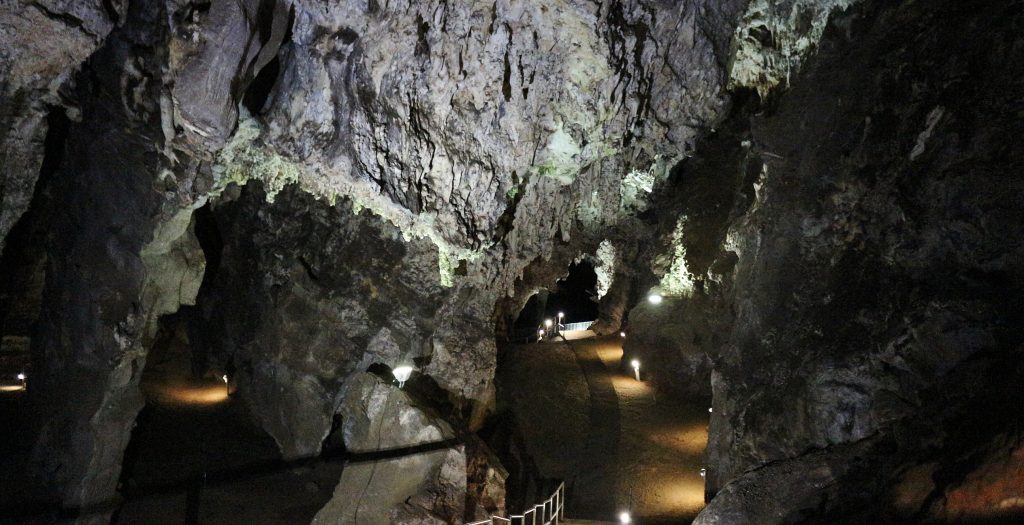
The discovery, excavation and research on Little Foot through the years:
In the late 1890s gold miners dynamited the Sterkfontein Caves in search of limestone which they converted into the quick lime required for processing gold. Their explosions revealed entrances to the cave system as well as a profusion of fossil bone fragments from millions of years ago.
In 1936, palaeontologist Robert Broom began collecting fossils that had been blasted out by the miners. Many discoveries were made in the field of palaeoanthropology at the Sterkfontein Caves, particularly the finding of the first adult Australopithecus africanus in 1936, which followed the discovery in 1924 by Raymond Dart of the Taung child, the first Australopithecus fossil ever found. At Sterkfontein on April 18, 1947, Mrs Ples, the most complete skull of an Australopithecus africanus ever found, was discovered by Robert Broom and John T. Robinson.
In 1994, Professor Ronald J. Clarke (University of the Witwatersrand) discovered the first four foot bones of a fossil nicknamed Little Foot, which led in 1997 to locating of the oldest Australopithecus skeleton found in South Africa and the most complete Australopithecus skeleton ever found in Africa (up to 97 %). In 2015 it was dated at 3,67 million years old. South Africa was the first region in Africa to produce very early fossils of our ancestors. Little Foot is described by Ronald J. Clarke and his team as Australopithecus prometheus – and not as Australopithecus africanus.
- 1994: Ronald J. Clarke identified four conjoining Australopithecus footbones in a box containing animal bones from the Sterkfontein caves.
- 1997: Stephen Motsumi and Nkwane Molefe were sent by Ron Clarke into one of the Sterkfontein caverns and found the contact between the first four foot bones with the rest of the tibia, the left tibia fragment ant the lower legs in the Sterkfontein cave. Beginning of excavations.
- 1997 – 2014: Discovery and excavation of every part of the skeleton.
- 2015: Reconstruction of the Little Foot fossil was nearing completion, following many years of work.
- 2017 – 2018: Analysis of the skeleton by the Little Foot research team and preparation of papers for publication in scientific journals.
- 2019: Celebration of the 25th anniversary of the discovery of the Australopithecus prometheus fossil.
The Sterkfontein Caves Research team is hosted by the University of the Witwatersrand and currently its main researchers are:
-Prof Ron J. Clarke (ESI)
-Prof Kathy Kuman (GAES)
-Prof Dominic Stratford (GAES)
-Laurent Bruxelles (INRAP | CNRS | IFAS-Recherche)
-Amélie Baudet (CoE Palaeosciences | GAES)
-Prof Travis Pickering (University of Wisconsin)
-Prof Jason Heaton (Birmingham-Southern College)
-Prof Kris Carlson (University of Southern California)
-Tea Jashashvili (University of Southern California)
-Prof Robin Crompton (University of Liverpool)
Geoarchaeologist Laurent Bruxelles has been working with Prof. Ron Clarke, Dominic Stratford and the Sterkfontein Research team since 2007, studying the history and geology of the caves.
The skeleton of Little Foot, found in the Sterkfontein Cave, almost complete

© Paul Myburgh
Senior researchers, researchers, post-docs, students and fossil preparator and casting technicians.
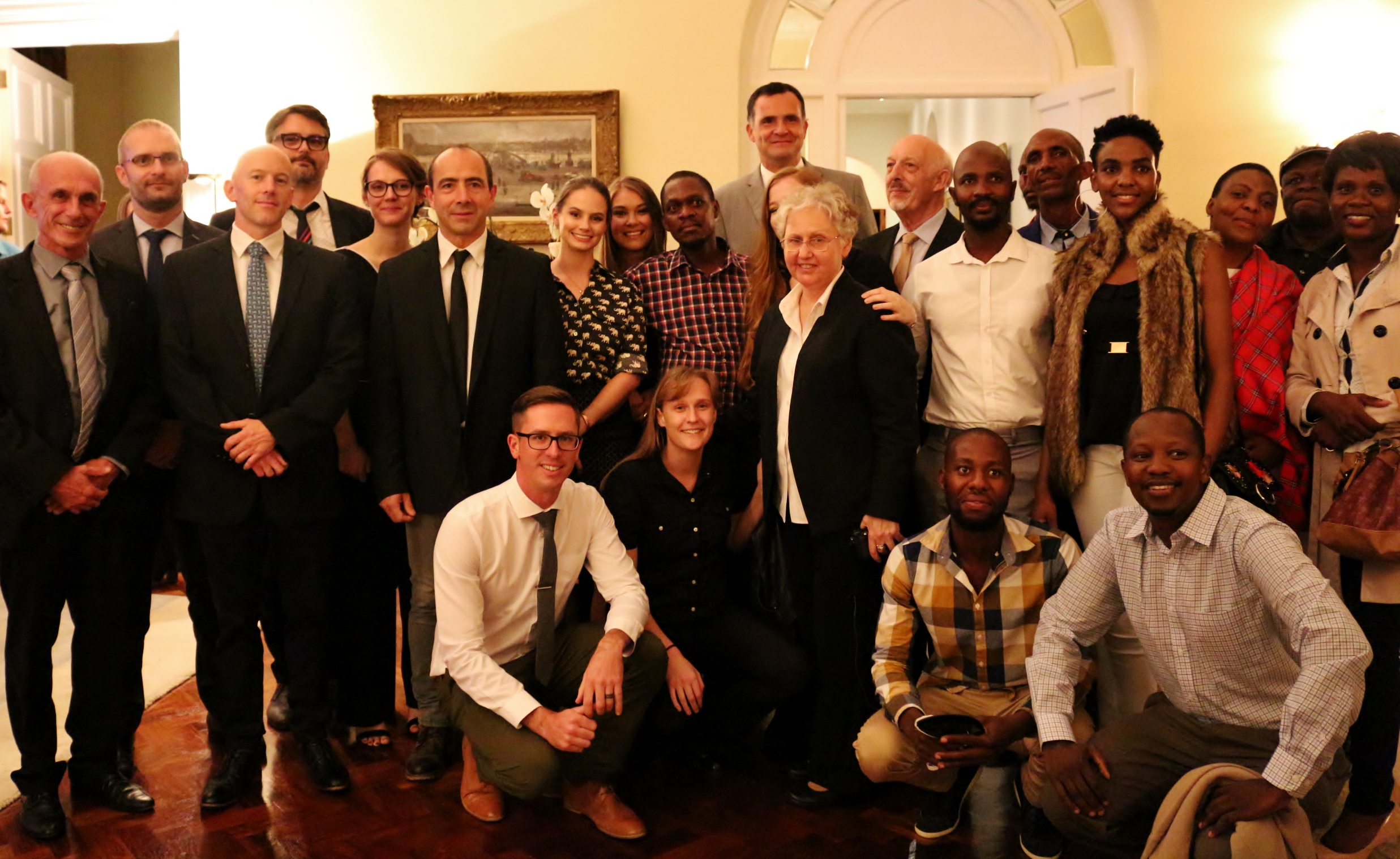
The cast of Australopithecus prometheus "Little Foot", almost complete, presented for the first time to the public

H.E ambassador Christophe Farnaud, Prof. Ronald J. Clarke, Prof. Kahtleen Kuman, Laurent Bruxelles and Amélie Beaudet.

The oldest stone tools discovered in the Sterkfontein Caves, dated close to 2.2 million years.
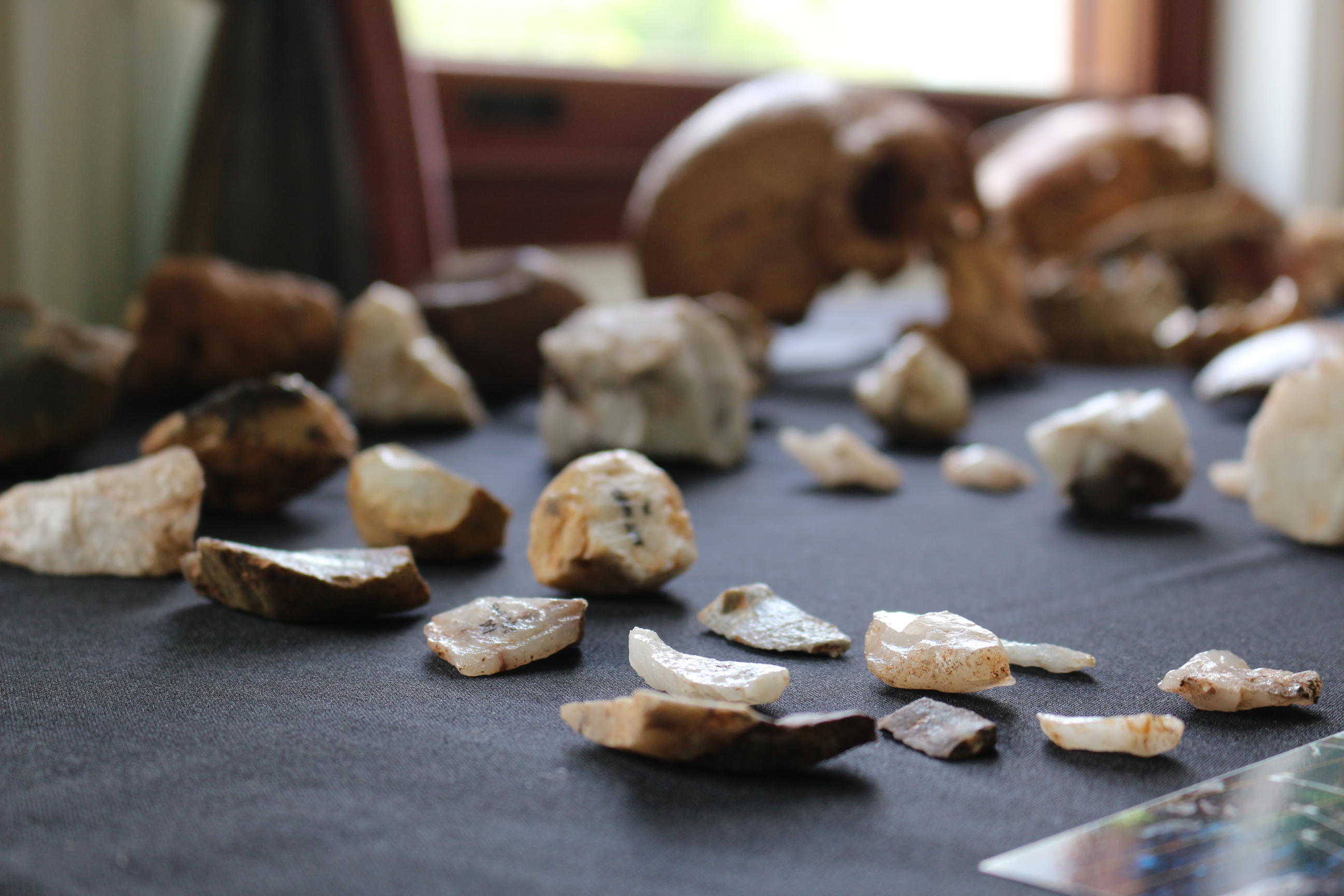
The skull of Little Foot

The laborious excavation of the skeleton
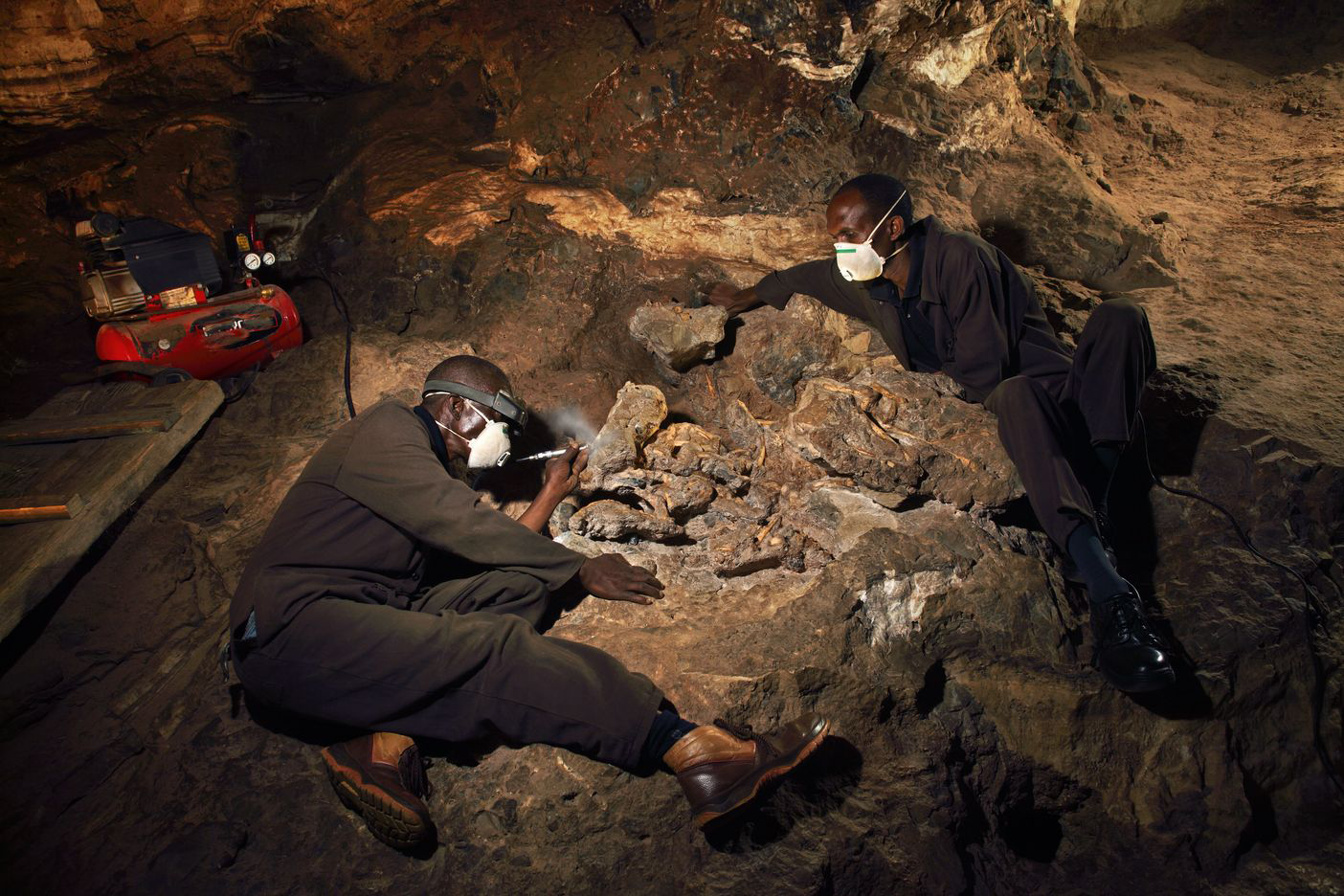
© P. Landman and R. Benali
On April 3rd 2019, we celebrated the 25th anniversary of the discovery of Australopithecus fossil Little Foot at the Résidence de France in Pretoria.
Publications about the discovery of Little Foot:
A selection of publications about Little Foot and the Sterkfontein Caves:
>” Sterkfontein member 2 foot bones of the oldest South African hominid” (1995)
>“First ever discovery of a well-preserved skull and associated skeleton of Australopithecus” (1998)
> “New cosmogenic burial ages for Sterkfontein
Member 2 Australopithecus and Member 5 Oldowan” (2015)
>“The endocast of StW 573 (“Little Foot”) and hominin brain evolution”(2018)
>“The bony labyrinth of StW 573 (“Little Foot”): Implications for early hominin evolution and paleobiology” (2018)
>”Excavation, reconstruction and taphonomy of the StW 573 Australopithecus prometheus skeleton from Sterkfontein Caves, South Africa” (2018)
> “A multiscale stratigraphic investigation of the context of StW 573 ‘Little Foot’ and Member 2, Sterkfontein Caves, South Africa” (2019)
>Documentary made by the CNRS (in English):
>Videos made by the University of the Witwatersrand:
Over the years, the Sterkfontein Caves Research team has received the support of many institutions, notably PAST (The Palaeontological Scientific Trust). IFAS-Recherche is very proud to be one of them since 2016.
- Human Origins in Mozambique and Malawi Environments (2019-2020)
An archaeological fieldwork project
In short
The Human Origins in Mozambique and Malawi Environments mission is funded by the CNRS as part of the 80-Prime Transversal and Interdisciplinary Initiatives project. In addition to UMR TRACES researchers, it benefits from a solid network of interdisciplinary collaborations involving geologists, geomorphologists, paleontologists, archaeologists, geophysicists, geochemists and geomaticians.
This project, built on ongoing work in South Africa and Mozambique, aims to identify features that could help to locate potential fossil sites, in the context of ancient karsts.
Where?
The project is based on recent results from the study of the fossiliferous sites of the Cradle of Humankind in South Africa, where researchers have been working for more than 10 years, and an almost virgin zone for this type of research, northern Mozambique, which constitutes a link between the two main fossiliferous areas. It appears that the hominin fossils of this area and those of East Africa have experienced a comparable evolution even though they are preserved in two distinct regions, separated by more than 4000 km. The only commonality is that in both cases they are kept in geological traps: the rift in East Africa and the karst in South Africa. No other site is known between these two regions. It is difficult to imagine that during the millions of years that this evolution lasted, this large area was not also occupied by hominins, as is certainly the case in a large part of Africa.
The region studied has a unique position at the crossroads between three major geological, geomorphological and bioclimatic domains: the southernmost part of the East African rift, the large areas of erosion that characterize a large part of Africa and the vast coastal plain along the Indian Ocean. It is the only place in Africa where fluvio-lacustrine rift fills (Malawi) are near karstic massifs. There is therefore a possibility of establishing correlations between the faunal and floristic processions, in particular by avoiding taphonomy issues, which are very different between the two domains.
The objective is to identify new fossil traps between these two regions, focusing in particular on the karst, the best geomorphological environment for the preservation of these ancient remains. In order to find these traps, comparative studies will be made with a well-controlled area, the “Cradle of Humankind” in South Africa.
Who?
The mission is led by Laurent Bruxelles. As a geologist/karstologist, he has worked on many Southern African archaeological sites, and other projects such as Human Origins in Namibia, which endowed him with a comprehensive view of the region’s geological and geomorphological history, as well as wide recognition from South African and French researchers.
Various specialists are working on this mission, such as geologists (Philippe Vernant and Pierre Camps), geomorphologists (Laurent Bruxelles, Dominic Stratford and Gregory Dandurand) and remote sensing specialists (Nicolas Poirier, François Baleux and Benjamin Lans).
What?
To date, two main regions in Africa can claim to be the cradle of humankind, where fossiliferous sites highlight the appearance of the genus Homo: the Great East African Rift and the South African karsts.
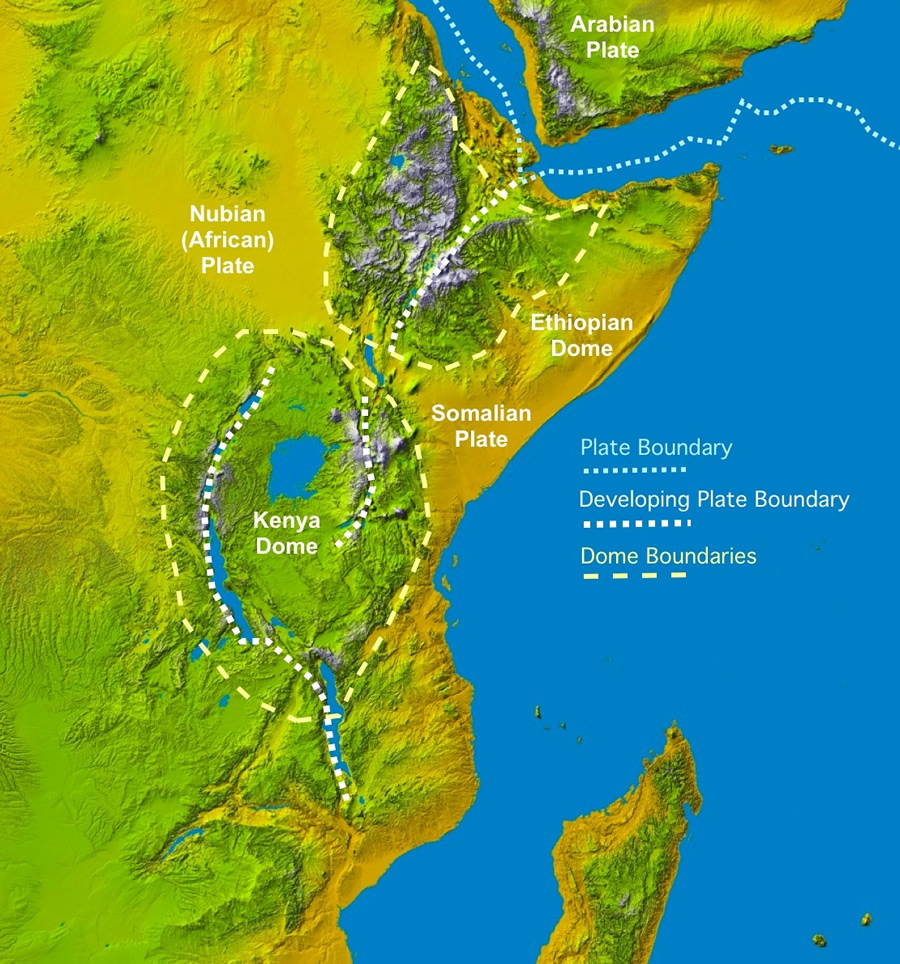
The Great East African rift is a large rift related to the processes of the Nubian and Somali tectonic plates splitting. As the rift floor collapsed, an important thickness of terrigenous sediments have accumulated. This sedimentary sequence is an exceptional record of the paleoenvironmental evolution of this region from East Africa for the Tertiary and the Quaternary. Fauna and flora remains are preserved in these deposits, including those of ancient hominins: Australopithecus, Paranthropus and Homo, covering the period of appearance of the genus Homo. The rifting mechanism has been accompanied throughout its history by volcanic activity related to the decompression of the Earth’s mantle and thus by the production of volcanic deposits.
……
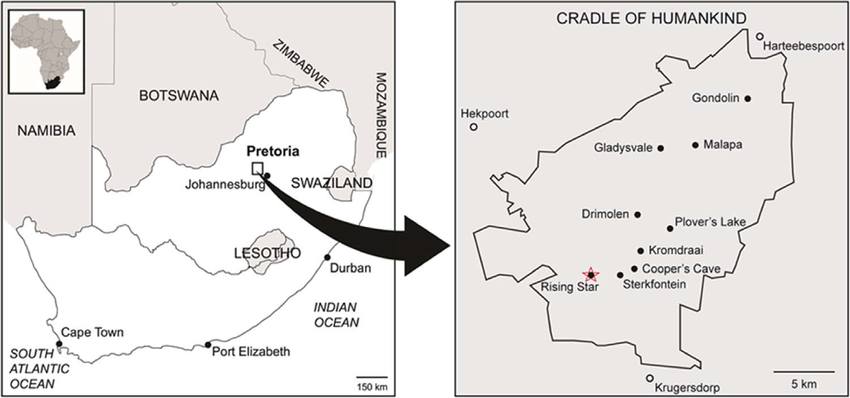
The second region that can be considered today as a cradle of humankind is located in South Africa in a very different geological and geomorphological context: the karst. Here it is the caves that have played the role of sedimentary trap and, according to the age of their formation and their overlap by the topographic surface, deposits of varying ages have accumulated there. Nevertheless, until very recently, South African fossils were considered to be too recent, because of datings that were poorly constrained by the complex stratigraphies of the caves. The dating of the Little Foot Australopithecus fossil, almost complete and found in anatomical connection, has questioned these datings. Indeed, with a date of 3.67 Ma, this fossil demonstrates, according to geological and biochronological data, that southern Africa has recorded a history of hominins at least as long and complex as the one known for several decades in the East African rift. These two regions show a parallel but complementary recording of this long evolutionary process.
It now appears that South Africa, like East Africa, could potentially be the “Cradle of Humankind”. But it might be better to say one of the cradles of Humanity. Indeed, if we find remains of old Hominids in both East and South Africa, it is mainly because the conditions of preservation are very favorable. It is likely that there were originally many other “cradles”, or even certainly that a very large part of Africa is the cradle. The search for new vestiges must now go through the search for geological traps. The HOMME research program proposes to answer this question, by looking for other geological traps that may have preserved other pieces of the “Cradle of Humankind”.
The discovery of new fossil sites in this region would be a major advancement in the knowledge of human evolution by removing several important scientific obstacles. These fossils would provide the opportunity to better understand the distribution of Australopithecus and paranthropic species and provide an additional milestone for the appearance of the genus Homo. In addition, it is not excluded that new species are present in this region and that they will come to enrich the fossil record of the human line. Such discoveries could help answer a crucial and still unresolved question about monophyly or paraphyly in the evolution of these ancient hominin species, either by showing their coexistence in this intermediate zone, or by highlighting the passage from one zone to another. The Great Rift is a natural corridor that has inevitably oriented migration and the sector we propose to study is exactly at its outlet.


